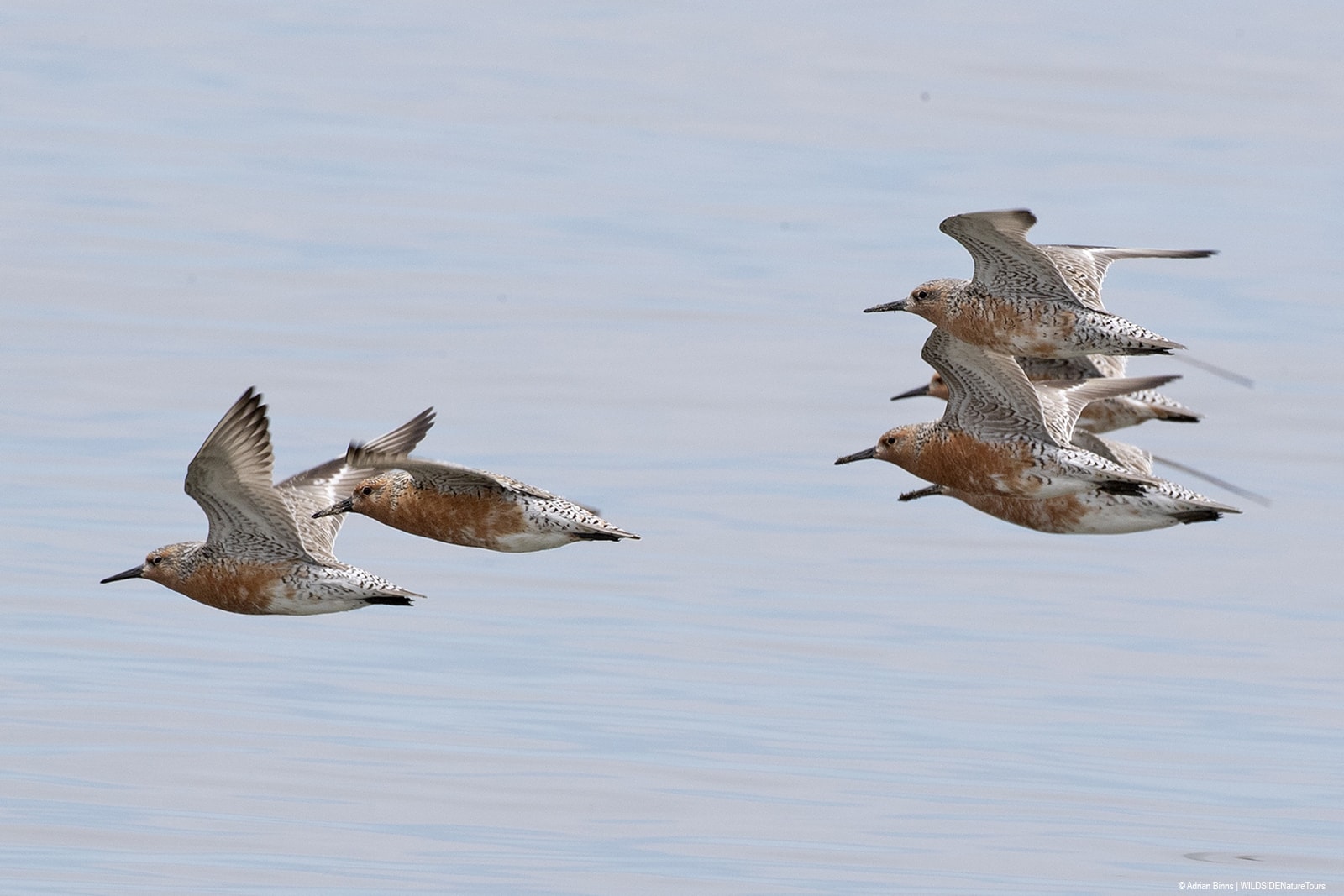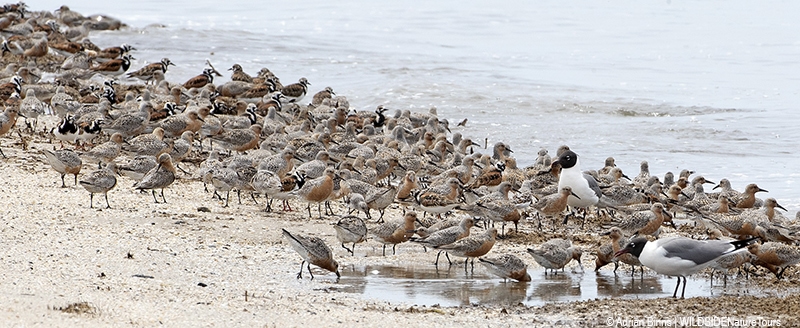
Red Knots on the Delaware Bayshore
May 23, 2021 | by Adrian Binns
May is a month when millions of shorebirds undertake a tremendous migratory journey, flying thousands of miles to breeding grounds in the Canadian tundra. Species like Semipalmated Sandpiper, Ruddy Turnstone, Sanderling, Short-billed Dowitcher, Dunlin, and Red Knot overwinter in South America, and wing their way north, stopping infrequently to rest and refuel along the Atlantic coast. Migrating shorebirds converge on several Delaware bayshore locations in Cape May County, NJ, and I spent a day exploring some of these spots last week, looking for feeding flocks.

Red Knots, Ruddy Turnstones and Laughing Gulls
At Cooks Beach, it was a treat to see thousands of shorebirds foraging voraciously at the edge of the waves. Sanderlings, Semipalmated Sandpipers, and Ruddy Turnstones comprised the majority of the flock. The birds were constantly in motion, running ahead of the rising tide, pulling worms out of the sand, snapping-up insects, and bathing in lapping waves. Several hundred Red Knots stood out larger than the others, feeding in clusters. This species depends heavily upon protein-rich Horseshoe Crab eggs for life-saving sustenance. Red Knots often arrive nearly emaciated, and need to double their body weight at this stopover point, to continue the next leg of their long and perilous migration. The eggs are rich in protein, and gobbled as the crabs deposit them on the shorelines. Competition is fierce as Laughing Gulls are feeding just as voraciously.

Red Knots, Ruddy Turnstones and Laughing Gulls
Horseshoe Crabs have spawned at the Delaware Bayshore for millenia, following ancient instincts to crawl ashore and lay their eggs on moonlit nights in May and June. Unfettered harvesting for bait, increased demand for medicine, and coastal development have put tremendous pressure on this prehistoric species. Horseshoe Crab populations have plummeted, correlated with severe decline in Red Knots. Longtime birders describe seeing vast flocks of Red Knots covering beaches as far as the eye could see. In recent years, I feel lucky to come across a few thousand at a time. Conservation efforts, including limiting crab harvest quotas, and restricting access to shorebird feeding areas, are helping both crabs and birds.

Red Knots
By mid-June, most shorebirds will be on their breeding grounds in Canada, busy raising their offspring. After a short breeding season, millions of birds will reverse direction to fly nearly 10,000 miles back to South America, continuing the age-old cycle. Shorebird populations remain fragile, if stable, and I’m grateful to all the organizations, private-public partnerships, individuals and volunteers working and volunteering to support some of the most amazing birds on earth. I’m already anticipating the summer southbound experience!
































